You don’t need to be an Olympic swimmer to benefit from wearing swim goggles. And you don’t need to have a big bank account to get an excellent pair of goggles, either. The bad news is that you may need to try a few pairs before you find the goggles that fit your needs and facial structure the best.
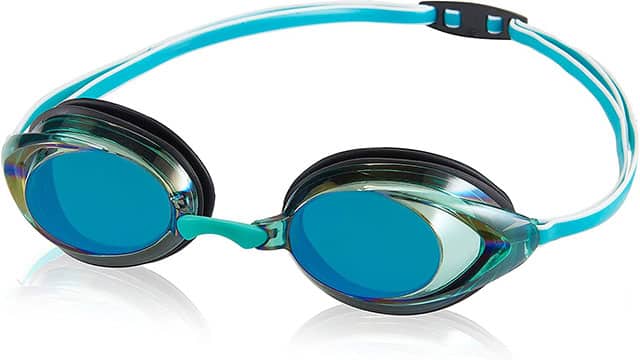
Goggle or Mask, Which is Best?
Swim goggles are designed to create a snug seal around the eye sockets and leave the nose free.
Masks seal around the eye sockets but also cover the wearer’s nose.
In both cases, the pressure exerted by water pushes the apparatus against the face, helping them to stay in place and safely sealed. This is called the “squeeze.†For a mask or goggles to function, the squeeze should be firm but not uncomfortable.
Divers need the extra coverage of a mask so they can alleviate the discomfort of the squeeze as they dive deeper. Deeper water equals increased pressure against the face. By blowing through their nose, a diver can equalize the pressure inside their mask.
For this reason, goggles aren’t sufficient for diving, as there is no way to ease the squeeze as divers go deep.
Swimmers don’t need the nose covering that’s on a diver’s mask. In fact, swimmers need to have their nose and mouth free for breathing when they bring their heads out of the water.
Which is best? Masks are best for divers. Goggles are best for swimmers. It’s as easy as that.
The Importance of Wearing Goggles for Swimmers
No matter where you swim, from the chlorinated pool in your backyard to freshwater lakes and rivers or in the ocean, it’s important to protect your eyes from all the things you can’t see.
Dangers of Chlorine
Chlorine is a chemical that kills most—but not all–of the harmful viruses and bacteria that can live in water. So, while it’s protecting your eyes from potential infection, the chlorine itself can be an irritant, especially for swimmers who are in the pool daily and for hours at a time. Chlorine also reacts with urine, sweat, and body oils to create chloramines, another eye irritant. If you needed another reason not to pee in the pool, this is it! The good news is that goggles can decrease your exposure to chlorine, its derivatives, and the microbes that are able to survive this environment.
Too much chlorine and chloramine exposure can cause:
- Irritation
- Burning
- Redness
- Tearing
- Sensitivity to light
- Blurry vision
Experts recommend rinsing your eyes with saline solution or cool clean water after swimming. If symptoms persist more than a few hours after getting out of the pool, consult an eye doctor.
Dangers of Fresh Water
Since it’s untreated, fresh water contains a host of benign and potentially hazardous microbes. One particular concern is an organism called acanthamoeba that can cause a condition known as acanthamoeba keratitis. Though rare, acanthamoeba keratitis can threaten your vision.
Symptoms include:
- Redness and pain that doesn’t respond to traditional treatment
- Excessive tearing
- Light sensitivity
- Blurry vision
- The sense that something is lodged in the eye
- Cloudy cornea
In addition to wearing goggles, removing contact lenses before swimming is the best protection against acanthamoeba keratitis. If you do forget to remove them, it’s best to throw them out and use a fresh pair.
Dangers of Saltwater
Though seawater is similar in makeup to human tears, the higher concentration of salt in seawater can irritate the eyes instead of soothing them. Bacteria and viruses are also a concern with seawater, but an even greater risk is debris.
Sand, small pieces of driftwood, plant matter and other hard particles can scratch the eye and cause a corneal abrasion. You may not notice the abrasion right away, but symptoms can be serious and require prompt medical attention.
Signs you’ve suffered an abrasion are:
- Pain
- A feeling of grit in the eye
- Tearing
- Sensitivity to light
- Redness
- Blurry vision
- Headache (Note: Mayo Clinic mentions headache as a symptom, but this is not traditionally the case)
If you suspect you’ve got a corneal abrasion, do not rub your eye or touch the eyeball with anything—not even your fIf you suspect you’ve got a corneal abrasion, do not rub your eye or touch the eyeball with anything—not even your finger or a soft cotton ball. Get medical help immediately.
Top 10 Goggles for Swimmers
Even for casual swimming and playing in the pool, goggles are beneficial. Certainly, if you are taking up swimming for fitness or planning to join the swim team, a good pair of goggles is as important as a good swimsuit.
So how can you find the ones with the best value that will also meet your needs? Just take a look at our top 10 goggles on the market for swimmers!
1. Best Overall: Speedo Mirrored Vanquisher 2.0

The Speedo Mirrored Vanquisher has earned thousands of positive ratings from users. They are reasonably priced and boast a universal fit that works for most people. They are available in a vast array of colors, with a match for just about every swimsuit shade. The lenses are made of polycarbonate, which provides built-in UV protection. The mirrored finish provides shields against glare, whether you’re swimming in open water or the community pool. The lenses are also anti-fog. The goggles are 100% PVC and latex free, for those with allergies or sensitivities. Four interchangeable nosepieces are provided to achieve the optimal fit. The silicone seals are cushioned for comfort.
2. Most Budget-Friendly: Aegend Swim Goggles
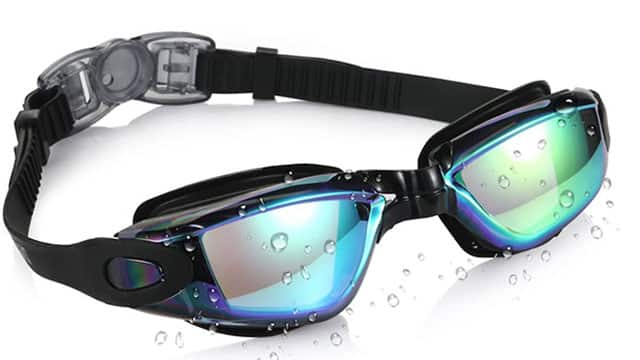
No, they’re not perfect, but the Aegend Swim Goggles are a great option for casual use. They are well-made and come in a wide variety of colors. The lenses are made of polycarbonate, which offers impact-resistance and UV protection. The inner surface is also coated with an anti-fog treatment. The frame is made of silicone, for flexibility, comfort, and leak protection. They fasten with an innovative clasp, which helps to prevent hair pulling when putting on and taking off the goggles.
3. Best for Competition: WaterOptics RS 101 Mirrored Competition
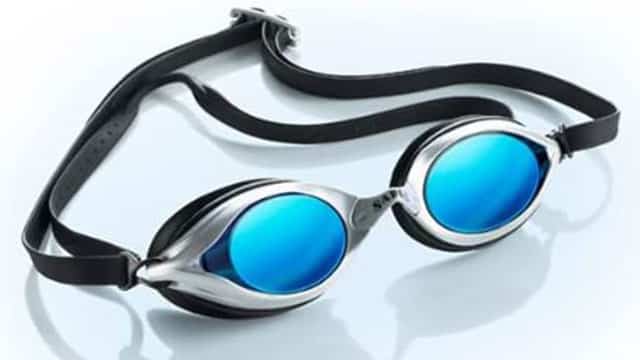
The RS101 is designed with competition in mind. They offer flat goggles to avoid headaches caused by the distortion in curved lenses. The superior clarity of the HD lenses makes them popular with professional swimmers. Lens options include tinted or mirrored offerings. Frame colors are limited, but varied. Best of all, two of the colors are available in prescription powers ranging from -1.50 to -10.00 Diopters. These parameters are generous, but they won’t work for all myopes. They also won’t benefit those individuals with hyperopia or astigmatism.
4. Best for Comfort: Aqua Sphere Seal 2.0
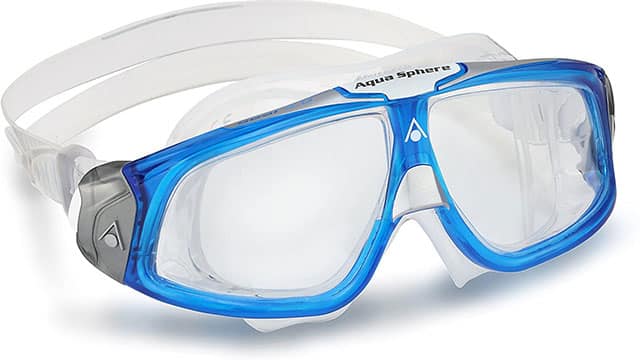
Many of the smaller goggles can exert undue pressure on the bones of the orbit. Aqua Sphere 2.0 offers a larger profile fit for decreased pressure on the eye socket and better overall comfort. If goggles never seem to fit you quite right, cause headaches, or won’t stay on, Aqua Sphere Seal 2.0 may be the answer. They have a wider profile that some users find to be bulky, but the width is the key to their comfort. The lenses are made of durable Plexisol, with anti-fog and anti-scratch treatment. The lenses are clear, making them ideal for swimming indoors, or outdoors on cloudy/overcast days. The wide lenses offer 180-degree visibility. The buckles at the sides offer quick and easy adjustment of the head strap and maximum leak protection. They are latex-free and hypoallergenic. Colors are limited to three choices. These goggles are well constructed in Italy.
5. Best for Kids: Speedo Skoogles Swim Goggles
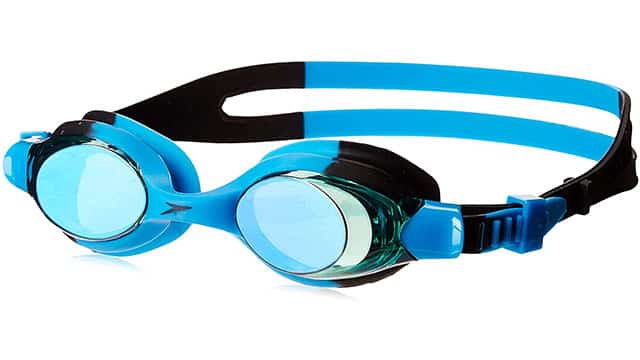
TThese inexpensive goggles are made to fit on small faces. The sizing is intended to fit a wide range of face dimensions. The straps are made from extra-soft silicone, and the colors are bright and fun. The polycarbonate lenses offer anti-fog and UV protection. The side-release clips offer easy adjustment of the head strap. These goggles are latex-free.
6. Best for Men: Zionor GI Men’s Goggles
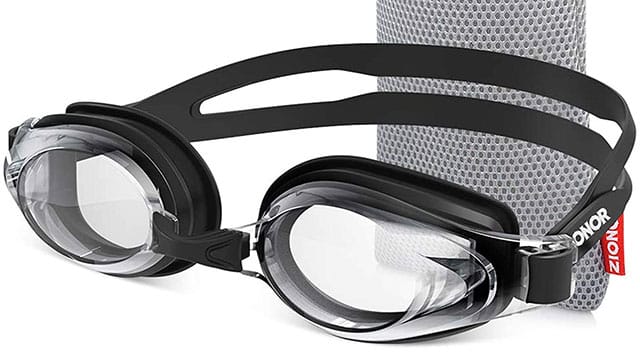
The Zioner GI goggles are made to fit a larger face with comfort. They have all the bells and whistles a non-competitive swimmer needs at a low price. These unisex goggles offer polycarbonate lenses with 100% UV protection, and an anti-fog, waterproof, polarized, mirror coating. These are also available in prescription powers ranging from -2.00 to -10.00 Diopters. The increments are 0.50 D between -2.00 to -5.00, and 1.00 D above that range. That means these powers won’t work for all myopes. They also won’t benefit those individuals with hyperopia or astigmatism.
7. Best for Women: Speedo Futura Women’s Goggles
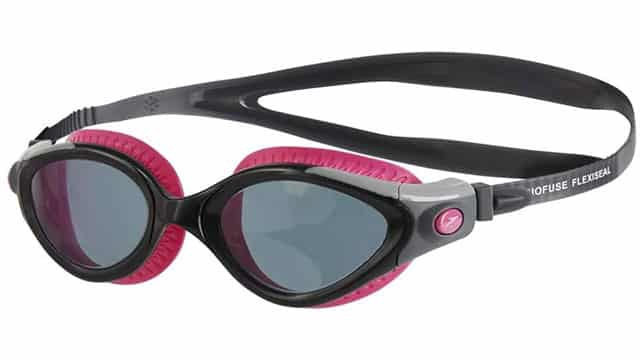
Comfort, flexibility, and a design made to adapt to the size of the swimmer’s face are qualities that make these goggles stand out from the crowd.The Speedo Future’s provide a leak-free fit and one-touch adjustment with the push of a button. The wide lenses are made of polycarbonate and coated with an anti-fog treatment. They are clear, for optimal clarify when swimming indoors, or outdoors on cloudy/overcast days. The lens seals are flexible, for a cushioned and comfortable feel. They are available in a single color.
8. Best in Polarized: TYR Sport Special Ops 2.0
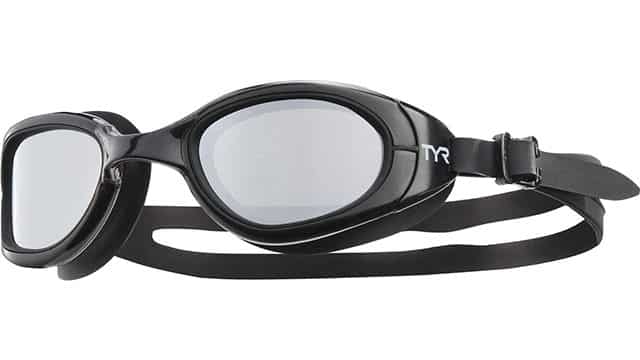
Distance swimmers and triathletes reach for polarized glasses due to the extra glare protection they provide. The TYR Special Ops are designed to provide a wide range of vision underwater vision. Lenses are made of polycarbonate, which provides 100% UVA/UVB protection. They are wide for optimal peripheral vision, and are embedded with an anti-fog treatment. Hypoallergenic silicone gaskets provide a watertight seal. Color availability is limited.
9. Best Selling: Aqua Sphere Kayenne
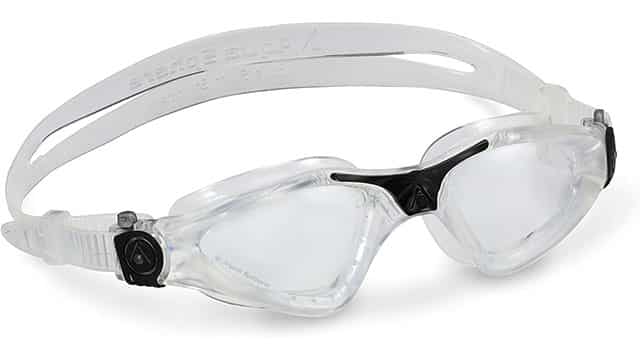
Aqua Sphere Kayenne rates as a best-seller thanks to its overall high performance and advanced technology. The oversized Plexisol lenses allow for 180-degree visibility with 100% UV protection, anti-fog and anti-scratch. While the lenses are large, the frame is minimal, to minimize drag and enhance hydrodynamics. Silicone straps are comfortable and durable. Lenses are available in clear, tinted, mirrored or polarized options. These goggles are also available in a junior size for children. Made in Italy, the construction on these goggles is solid.
10. Best Splurge: Blue Magic Mirror Gold
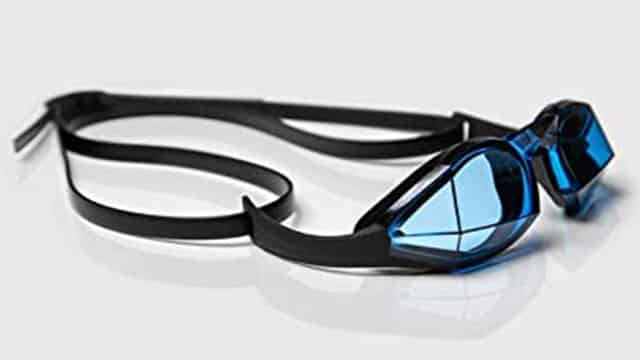
The number-one seller from the Magic5 lineup of custom-fitted goggles. Blue Magic goggles use facial scanning technology to measure eye and nose dimension to produce the perfect fit, guaranteed. Several lens options are available, including clear, tinted, mirrored. A lens case is included. Even with the upgrade of having goggles made to your specifications, the price is still affordable at $65.
It doesn’t matter how technologically advanced or simple your swim goggles are, removing contacts, and rinsing your eyes with clean water after swimming are still crucial steps in keeping your eyes healthy.
Remember, if you experience any persistent redness or unusual symptoms after being in the pool, ocean, or freshwater, call your eye doctor for an examination. Eye problems related to swimming can typically be resolved if treated early.
Frequently Asked Questions (FAQ)
Q: Is it necessary to choose polarized goggles?
Polarized goggles help with glare, which can interfere with the ability to see in certain conditions. Glare can be problematic when swimming in the open water, as it can pose a challenge in sighting. Polarization is a personal preference, and has no health implications. UV protection, however, is imperative to protect the eyes from damaging ultraviolet rays.
Q: Can I wear contact lenses when swimming?
As you now know, water can contain microbes that increase the risk of serious and potentially blinding eye infection. Therefore, it’s best to skip contacts altogether while swimming; prescription goggles can help with vision clarity. If you choose to wear contacts while swimming, it’s important to use goggles with a tight fit to minimize the risk of water entering the goggles. Remove your contact lenses as soon as you’re done swimming, and disinfect them according to the solution manufacturer’s instructions. Better yet, throw them out and start fresh with a new pair.
Q: I can’t wear goggles because they’re uncomfortable. What are my options?
Goggles come in all shapes and sizes. If the ones you’ve tried have been uncomfortable, don’t despair; you just haven’t found the right pair yet. For example, some people can’t tolerate lower-profile goggles due to the pressure they exert on the eye sockets. In this case, larger goggles can often be quite comfortable. Many manufacturers offer good return policies and satisfaction guarantees. Check into this before you buy a pair so you can try them risk-free.
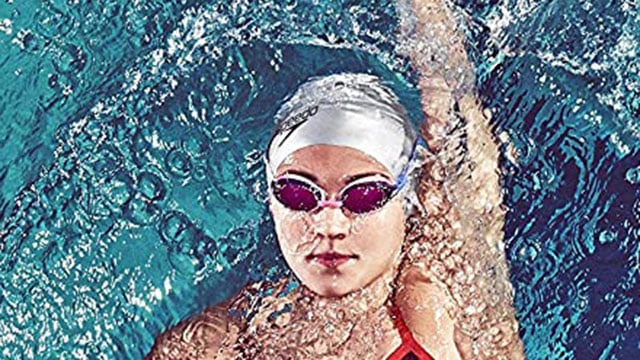

Leave a Reply